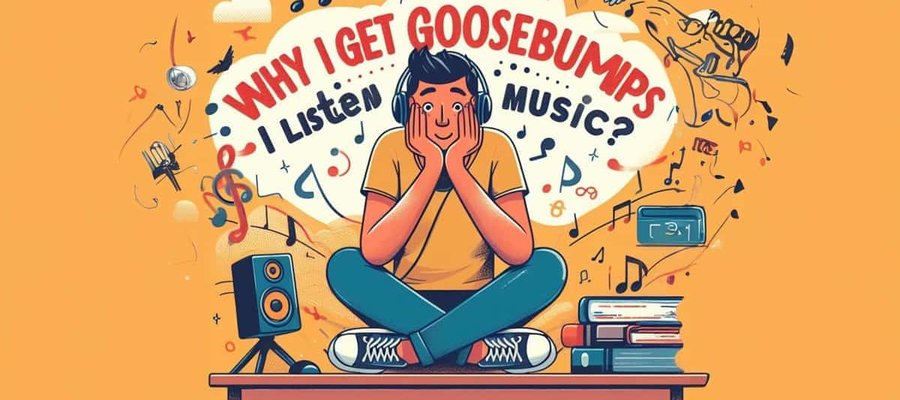Why Do I Get Goosebumps When I Listen to Music?

Music is a beautiful thing and people feel all kinds of emotions while listening to it. So, it should be no surprise that some get goosebumps when they listen to their favorite music and songs.
There are some studies that reveal why this phenomenon occurs, and it's mostly related to how our brains perceive different wavelengths. Moreover, it also explains some unanswered questions related to music theories. Let’s dive deeper into the feelings of music and chills!
What Triggers the Feeling of Goosebumps with Music?
There is no definitive answer to this question as no credible study has been conducted to unravel the mystery of musical chills. Many claim it to be an idiosyncratic phenomenon where it is a personal trait. Others believe that certain attributes of a piece of music do trigger the tingling feeling in the body.

Goosebumps when listening to music
Here is a list of musical factors that musicologists believe to be the major contributors to goosebumps when you listen to music-
● Sudden change in volume or bass.
● Introduction of a warm or soothing voice after a melody.
● Unusual or pleasant harmonies.
● Abrupt change in the music/tone.
● An orchestral piece followed by a harmonic chorus.
Whatever the reason might be, there’s no denying that goosebumps are a phenomenon that engages your body to the musical core. Moreover, significant studies have stated that the emotional response you feel towards music is a rewarding feature of yours!
What Does It Mean When I Get Chills Listening to Music?
When you get chills listening to music, it means your brain and body react to those sounds differently than others. According to a famous study published in the Social Cognitive and Affective Neuroscience journal, only half of the sample size showed any intense reaction such as goosebumps to music.

Musical chills and brain connectivity
The other half of the sample did, in fact, observe chills in their spines or musical chills when they connected with the harmonies.
The study was mainly conducted by the researcher with individuals by giving them a selection of songs and then listening to them. Whenever the person felt any goosebumps, he/she would press a button in front of them to let the researchers know that they felt the chills.
Out of 20 subjects, only 10 responded to the musical chills. The other 10 did not feel anything while listening to the music. Now, look at two of the major findings from this experiment.
Different Brain Composition
Those who felt the musical chills tend to have higher white matter connectivity between the sensory and emotional processing core of the brain. Due to the higher connectivity, those people usually show more response to musical strings and sounds compared to those who do not feel any goosebumps.
Other than that, the study also reveals that those who feel goosebumps when listening to music generally showed more emotions. They show an intense reaction whenever they perform any activity that makes them happy or sad.
A Phenomenon Called Frisson
Another revelation of this study was proved in later years that has been named. It’s called frisson and it still is one of the most intriguing mysteries that make music lovers curious.
Many researchers tried to explain further about this phenomenon but it failed to shed any light on it. There is still very little known about this mechanism and how it serves our emotional and auditory senses.
Conclusion
For you, musical goosebumps might be a regular thing that you enjoy. However, at its core, the phenomenon highlights how you connect with music as well as your affinity toward creativity.
So, don’t be worried about getting chills from now on, and enjoy the harmonies and melodies with open ears!